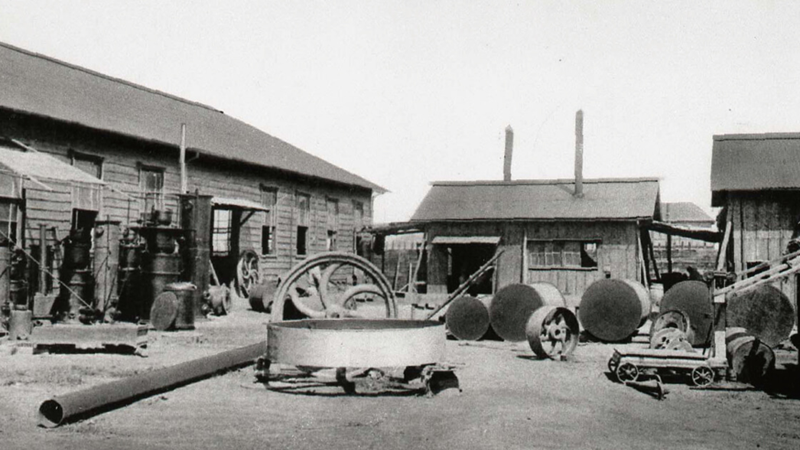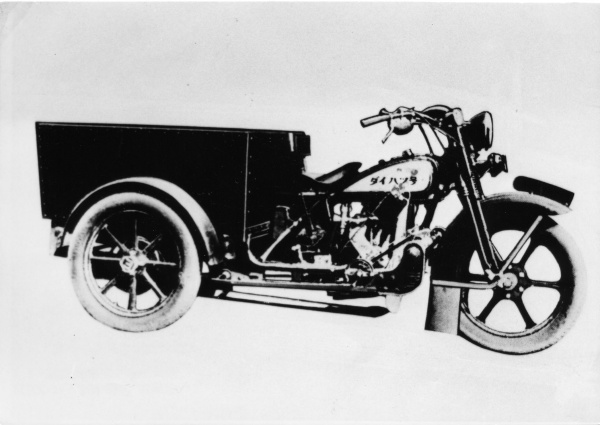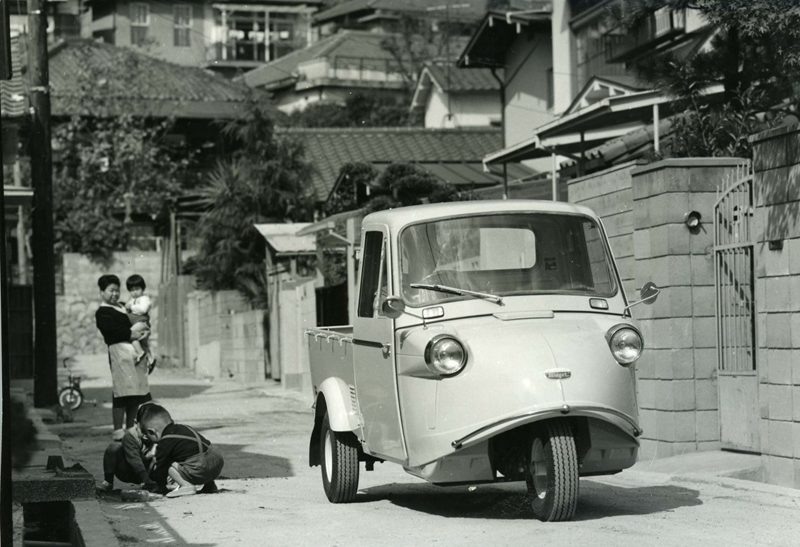Daihatsu’s Origins
The Starting Point is a Vision for Japan's Future
- Domestic Engine Production -

It began with Japan’s first domestically produced suction gas engine

In 1907, during the height of Japan‘s industrial revolution, Hatsudoki Seizo Co., Ltd. was founded in Osaka with the mission to domestically produce and popularize engines, which was seen as essential for Japan’s true industrialization. The company was planned by scholars such as Dr. Yoshiaki Yasunaga, the president of the Governmental Osaka Higher Technical School (now Osaka University’s Faculty of Engineering), along with like-minded business people who shared a commitment to contributing to Japan‘s industry.
At the time, internal combustion engines were mostly imported, and while there were actual products, there were no design blueprints or technical documentation. Japanese engineers worked tirelessly to overcome these challenges, eventually completing the first domestically produced suction gas engine with 6 horsepower in 1907. This passion and dedication from scholars and engineers laid the foundation for what would become Daihatsu.
A car manufacturer with a long history
Daihatsu boasts the longest history of any existing Japanese automobile manufacturer
From an engine manufacturer to an automobile manufacturer

In the early Showa Era, amidst the global turmoil caused by the Great Depression, the demand for three-wheeled vehicles (auto-three-wheelers) was increasing in factories and logistics companies.
However, the engines were still imported. Like in its early days, Daihatsu aimed for domestic production in this field and developed a new air-cooled, four-cycle gasoline engine. This engine powered the company’s three-wheeled vehicle called “the Daihatsu."
This vehicle became the first product made entirely with Japanese components in a modernized factory, marking the start of Daihatsu as an automobile manufacturer.
The name “Daihatsu” was originally a nickname
The term “Daihatsu” had been originally coined by customers as an abbreviation for “Osaka-based engine (‘hatsudoki’) manufacturer.” (The kanji character for “o” in “Osaka” is also pronounced “dai.”)
The “Midget” was born from customer feedback

After World War II, three-wheeled vehicles (auto-three-wheelers) became widespread but eventually grew in size, with the market shifting toward four-wheeled trucks.
In response to this, Daihatsu conducted a market survey—an unusual practice at the time. Customers voiced their concerns: "Recent three-wheeled vehicles can carry a lot, but they are too big and expensive. However, motorcycles don't offer enough cargo space." To address these needs, Daihatsu developed the "Midget," a light three-wheeled truck launched in 1957.
The concept of the Midget was “easy-to-handle, economical vehicles that can easily make tight turns," making it particularly useful for small delivery companies and local shop owners. Its ease of driving even in narrow streets made it an explosive hit.
The Midget's debut marked the turning point where automobiles, once considered a luxury, became an everyday necessity, paving the way for the era of "one car per household."
Daihatsu’s commitment to listening to its customers has become a foundational element of its manufacturing philosophy and continues to this day
The secret story behind development
Daihatsu actively incorporated feedback from its sales companies. One summer night in 1956, during a rainy evening in Osaka's Umeda area, a sales company president witnessed a scooter carrying beer bottles tip over, causing all the bottles to break. He thought, "If there had been a three-wheeled scooter with a canopy, this much damage wouldn’t have occurred."
This idea was immediately relayed to Daihatsu and directly put to use in the development of the Midget.